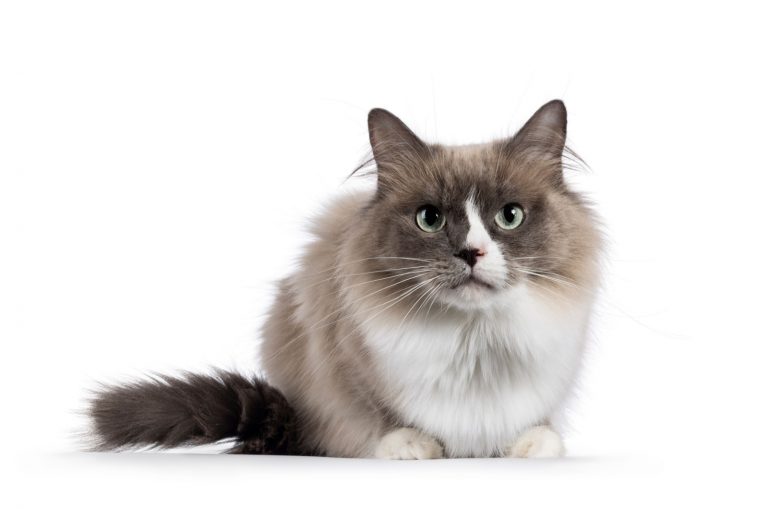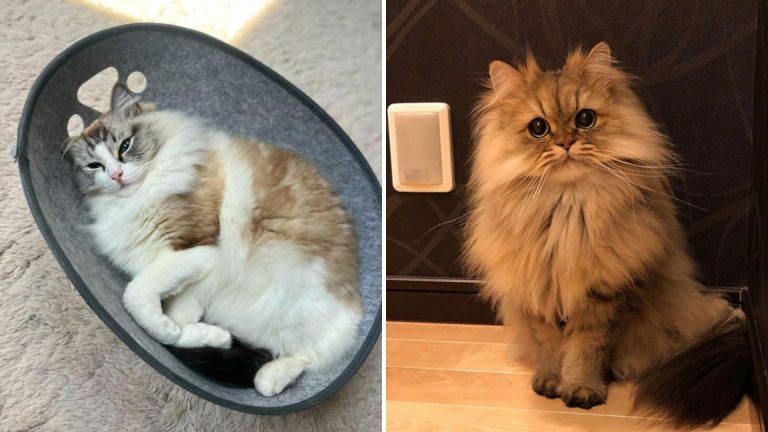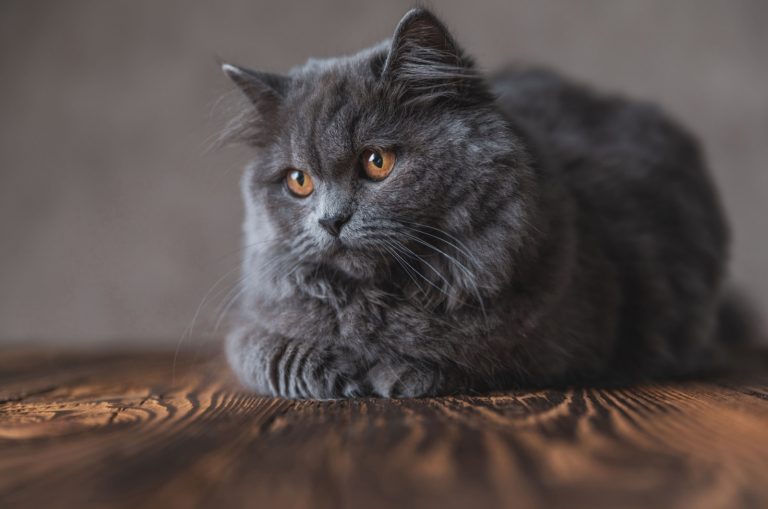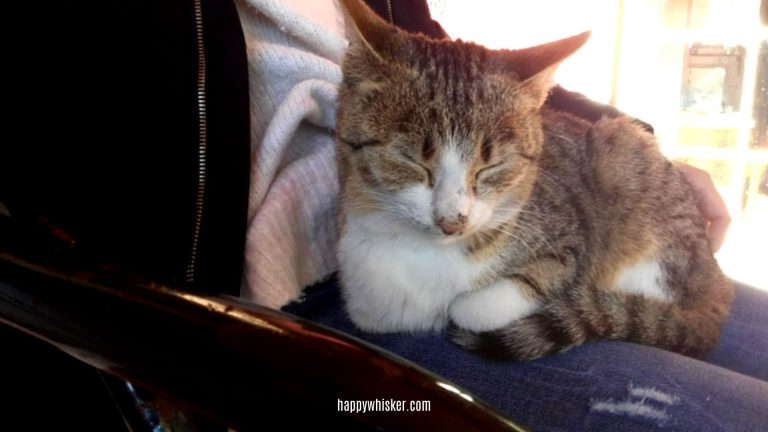Siberian Cats In All Their Colors
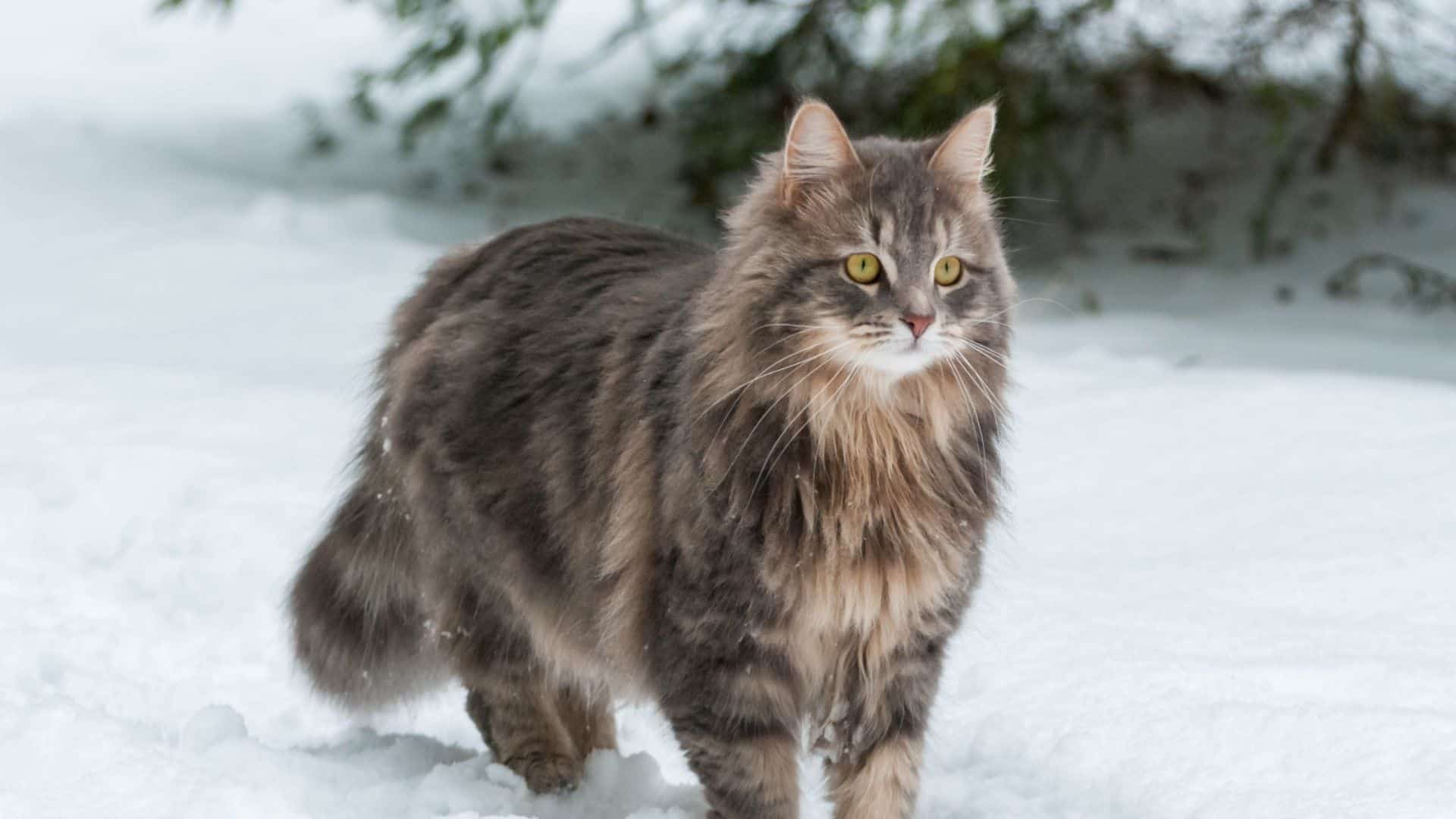
Siberian cats are one of the largest breeds of cats, along with Maine coons, and Norwegian Forest cats.
They originate from Siberia, hence the name. Because of their place of origin, these cats are characterized by beautiful thick coats that allow them to adapt to extremely low temperatures.
However, what’s even more interesting is that their coats may have many different color combinations, which makes them even more beautiful cats.
According to different cat associations and the breed standard, Siberian cats may be every possible color and pattern combination as every color is accepted.
Still, the most desirable are stronger colors with clearer patterns. Whatever color they are, you must admit that Siberian cats look stunning.
To learn more about the coat and the most common color combination of these cats, keep reading this article and check out the possible Siberian cat colors with picture examples.
The List Of Siberian Cat Colors
Siberian cats are characterized by a thick three-layered coat which may appear in almost every coat color and pattern combination.
Therefore, besides their lovely personality, their coat is another feature that attracts many Siberian cat lovers to the breed.
It’s interesting that this breed of cat has no breed-specific colorations, therefore, with so much choice, you can have a unique-looking cat in your favorite color combination.
If you wish to learn more about Siberian cat colors and patterns, keep reading and decide which one you would choose or which one is your favorite!
Solid Siberian Cats

Solid Siberian cats have single-colored coats without any markings. Due to the absence of markings and patterns, this Siberian cat color is also called self-color.
At the beginning of this article, I mentioned that Siberian cats may appear in any possible colors. Solid Siberian cats may appear in the following colors:
• White
• Black
• Red
• Cream
• Blue
The most interesting thing about these solid-colored cats is that their whole body is one single color and their nose and paw pads will also be that specific color.
When it comes to Siberian coat colorations that include white colors, it’s interesting that white fur can appear anywhere without any limitations.
You may also want to know the colors of Sphynx cats!
Tabby Siberian Cats
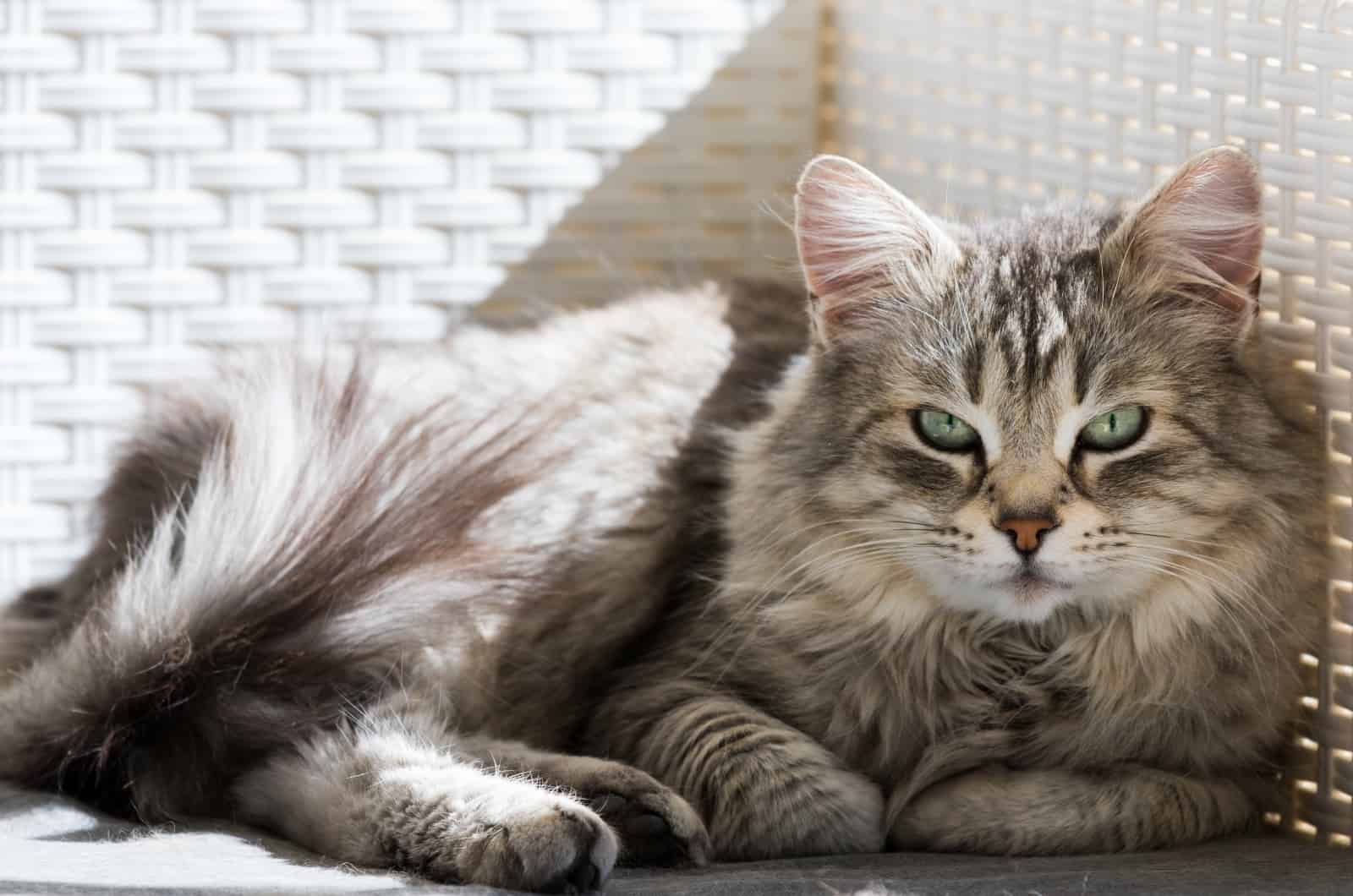
The tabby pattern is probably the most popular coat pattern among many different cat breeds. Just like that, this pattern is possible in Siberian cats as well.
Tabby Siberian cats will also have a distinct marking on their forehead in the shape of the letter “M”. However, when it comes to the body markings, they may vary depending on the exact type of tabby cat.
• The mackerel tabby – this type of tabby pattern refers to stripes on the cat’s coat which remind of a tiger’s.
• The classic tabby – this type is also called blotched and is characterized by uneven swirls over the cat’s body.
• The spotted tabby – as the name suggests, this type of pattern is characterized by spots, making them different from the previously mentioned types.
• The ticked tabby – this type is characterized by neither stripes, swirls, nor spots. This type has a unique appearance due to agouti hair which means that each hair has two or more colors. The only distinct marking that this pattern has is an “M” on the cat’s forehead.
Now that we have learned about the different types of tabby patterns, we can continue talking about different Siberian tabby colors.
• Blue tabby Siberian cat – unlike silver tabbies who have darker color shades, blue tabbies occur due to a dilute gene with a black coat color, which is why their coat color appears softer and more blue.
• Black or brown tabby Siberian cat – they’re called black or brown tabbies because their coat color varies from brown shades to black ones, even though they’re usually brown.
• Golden tabby Siberian cat – these cats are extremely rare, but their appearance is stunning. This pattern refers to cats with a beautiful golden color that may vary from apricot shades to straw color, and is often characterized by black paw pads.
• Silver tabby Siberian cat – silver Siberian cats with this pattern are slightly different from blue ones. The main difference between silver and blue tabbies is that silver ones have a coat color with a darker contrast, thanks to the silver gene mutation.
This happens because silver tabbies have a white undercoat and brown or black tips of the hair, creating a shiny look. Other variations of this coloration are possible such as cream silvers, blue silver, and red silvers.
• Tortoiseshell tabby Siberian cat (Torbie) – the combination of tortie and tabby pattern is called a torbie cat. Siberian cats may also be torbies. Their coat consists of a tabby pattern of blue, brown, or silver colors, along with red or cream patches.
Smoke Siberian Cats
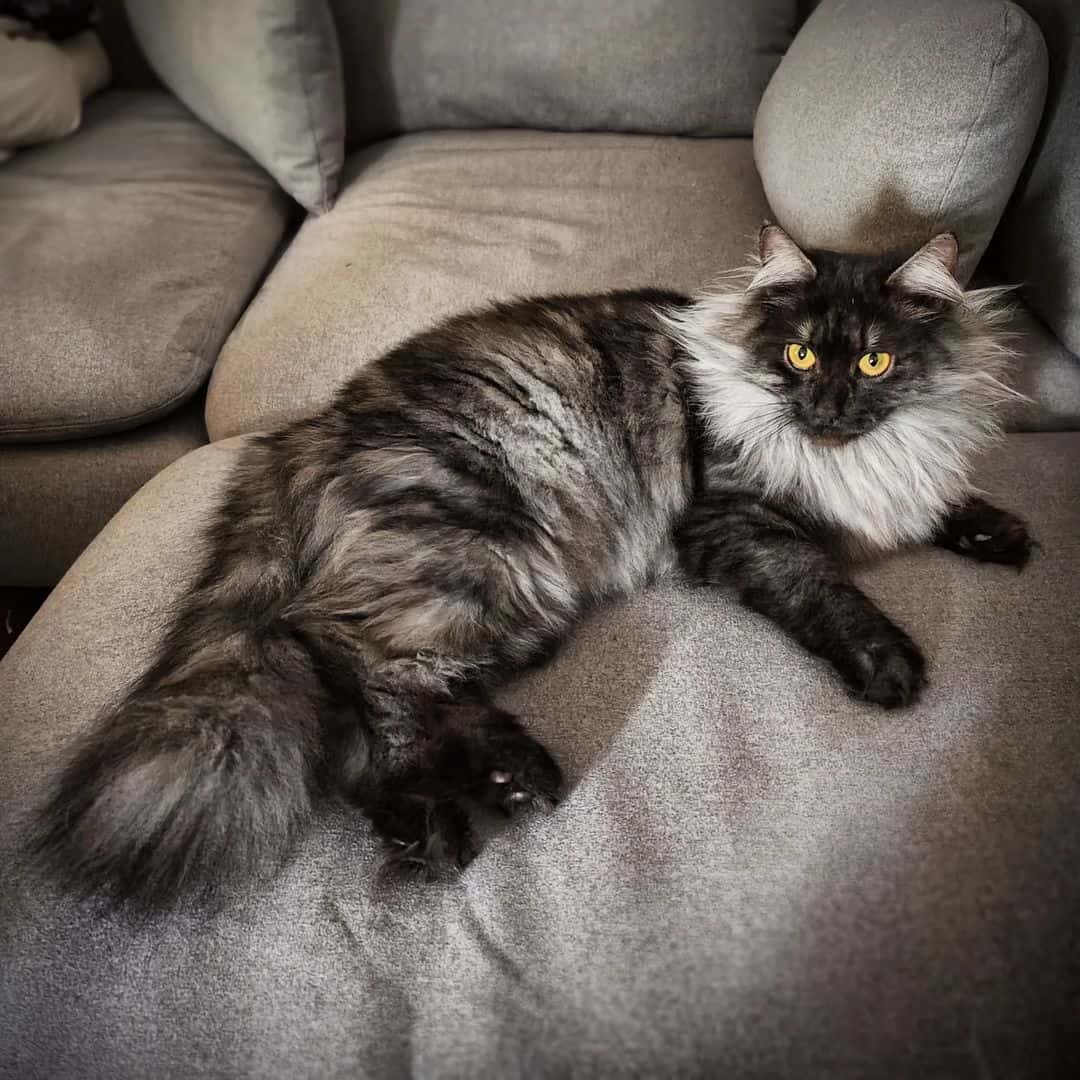
Smoke Siberian cats are characterized by a solid color and silver-gray patches all over their coat.
They have this smoky appearance due to the white undercoat shading to smoky colors like blue, black, red, tortoiseshell, etc. and because it seems that their hair is thinner at the ends.
Although it seems that the hair ends are thinner, worry not; these cats, just like every other Siberian cat, have extremely thick coats.
Pointed Siberian Cats
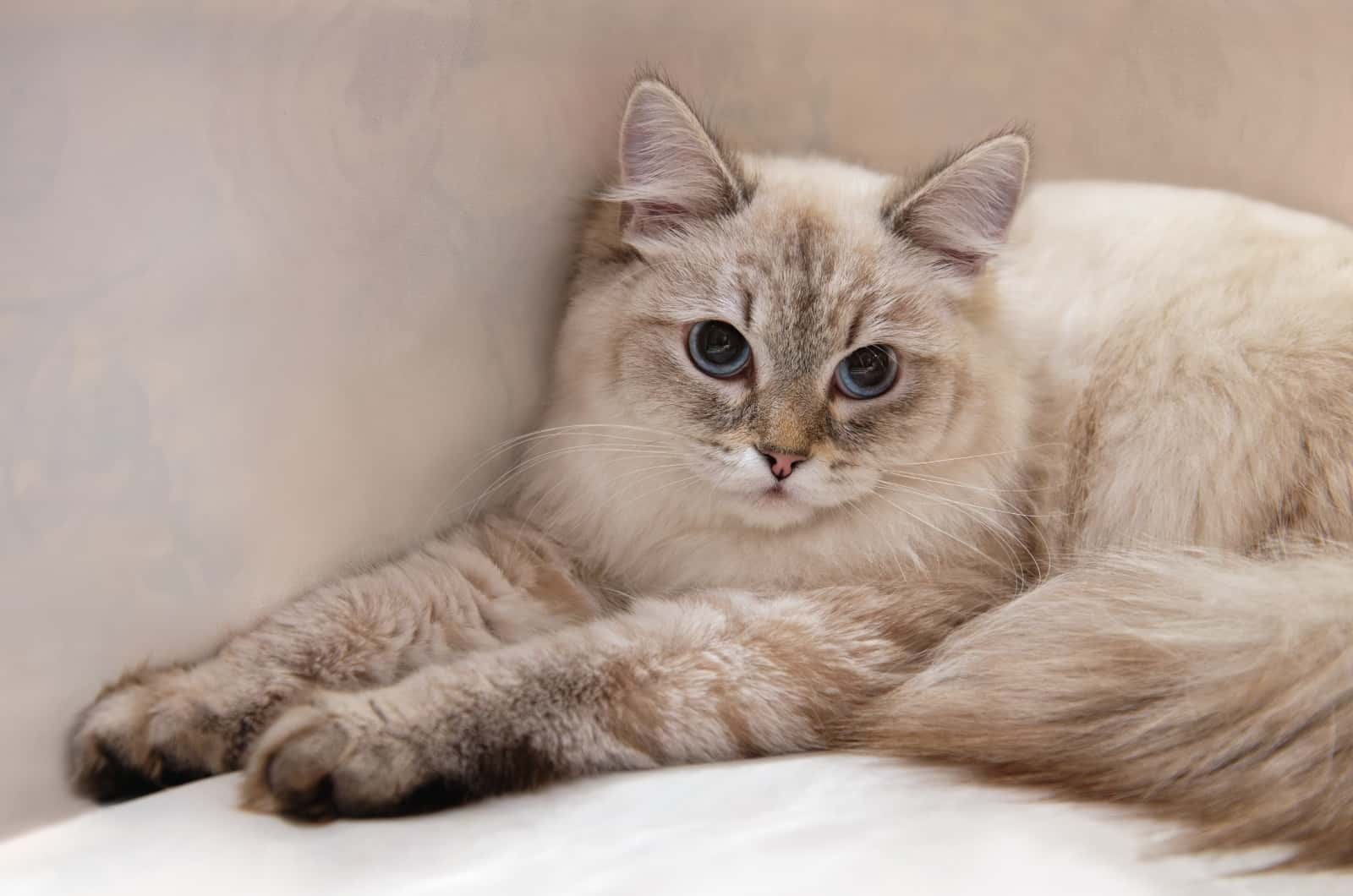
Pointed Siberian cats, also known as Neva Masquerade, will have a cream-colored body with pointed markings on their extremities, such as their face, paws, tail, and ears.
The pointed markings may be different colors such as seal, chocolate, blue, red flame, cream, lilac, cinnamon, and similar.
This pointed pattern is popular because it reminds people of Siamese cats, but many other cats may have this pointed pattern, such as Ragdolls, for example.
Moreover, Siberian cats with a pointed pattern are usually characterized by bright blue eyes and light or dark brown or nose and paw pads.
When it comes to this pattern, it’s important to mention that every cat with this pointed pattern is born completely white, and as the kittens age, their points get darker and darker.
It’s good to know this in order to avoid possible confusion about the color of your Siberian feline friend.
Lynx Point Siberian Cats
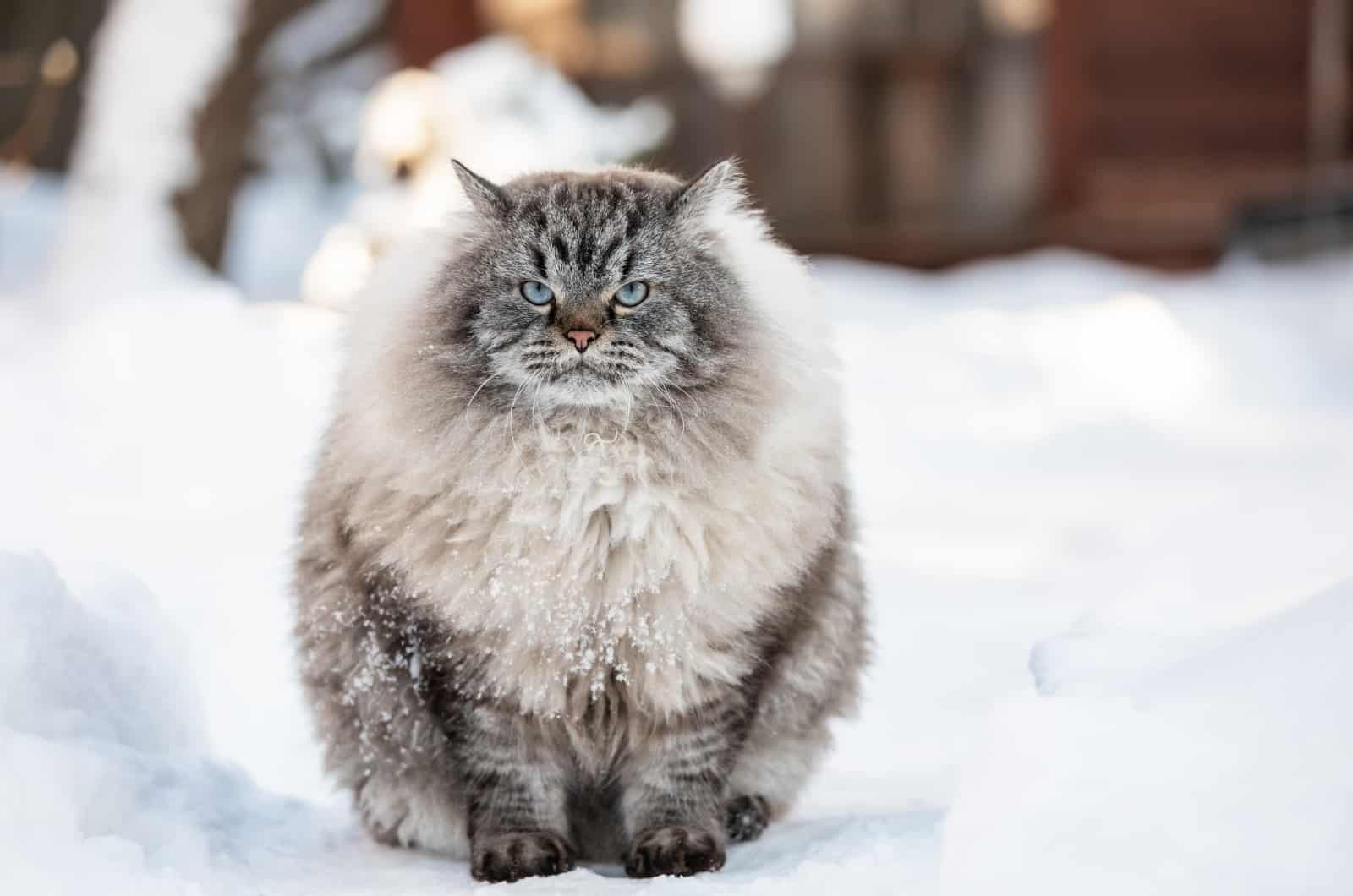
The main difference between these two is that the pointed pattern is characterized by solid point markings on the cat’s extremities, while the lynx pointed pattern is characterized by colors with dark stripes over it.
The possible colors of a lynx point pattern are seal, flame, blue, cream, etc.
There is one thing that is interesting about this lynx-pointed pattern, and that is that Siberian cats with this pattern may sometimes have slight and barely visible stripes over their cream-colored body.
Check out the list of long-haired cat breeds!
Wideband Siberian Cats
The wideband pattern is characterized by a darker color on the hair shafts, which makes the undercoat different from the top coat.
This pattern may appear with many other colors, therefore, here’s what they’ll look like:
• Red tabby Siberian cat with a wideband pattern will have a darker undercoat compared to the red top coat, which will provide the cat with a silver-red look.
• Solid-colored Siberian cats with a wideband pattern will look similar to cats with the smoky pattern.
• Black and blue tabby Siberian cats with a wideband pattern are characterized by a russet-colored undercoat which will result in a gold-like appearance.
• Silver tabby Siberian cats with a wideband pattern will look almost white.
Bicolor Siberian Cats
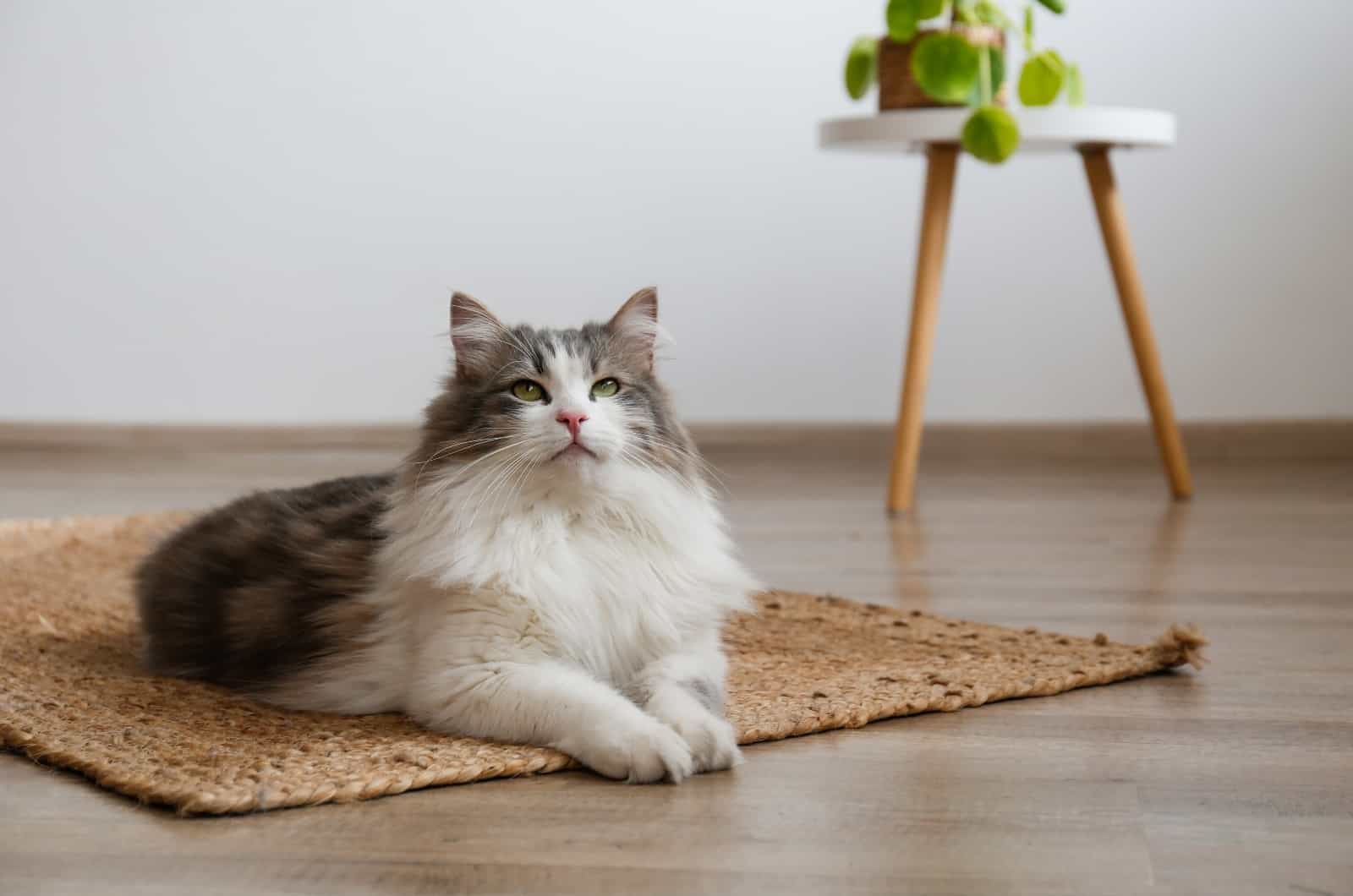
As the name suggests, a bi-color pattern consists of two different colors. The primary color is always white, combined with many other colors and patterns.
• White + solid – black, blue, red, cream
• White + smoke
• White + shell
• White + shaded
• White + tabby
• White + point
• White + lynx point
Bi-color cats usually have several distinctive features. One of the most recognizable is the inverted white “V” on the cat’s face.
Besides that, as white is the primary color in this pattern, their chests and paws will usually be white in color, while the rest of the body will be in some of the mentioned color and pattern combinations.
Shaded Siberian Cats

Shaded Siberian cats are characterized by a white or cream undercoat that shades into a darker overall color.
The body parts that will result in darker color shades are usually the tail, face, and each side of the cat’s body. These colors include red, silver, gold, tortoiseshell, and cameo.
Shaded Siberian cats have a similar appearance to those with the chinchilla pattern, which is often a cause of confusion.
Chinchilla Siberian Cats
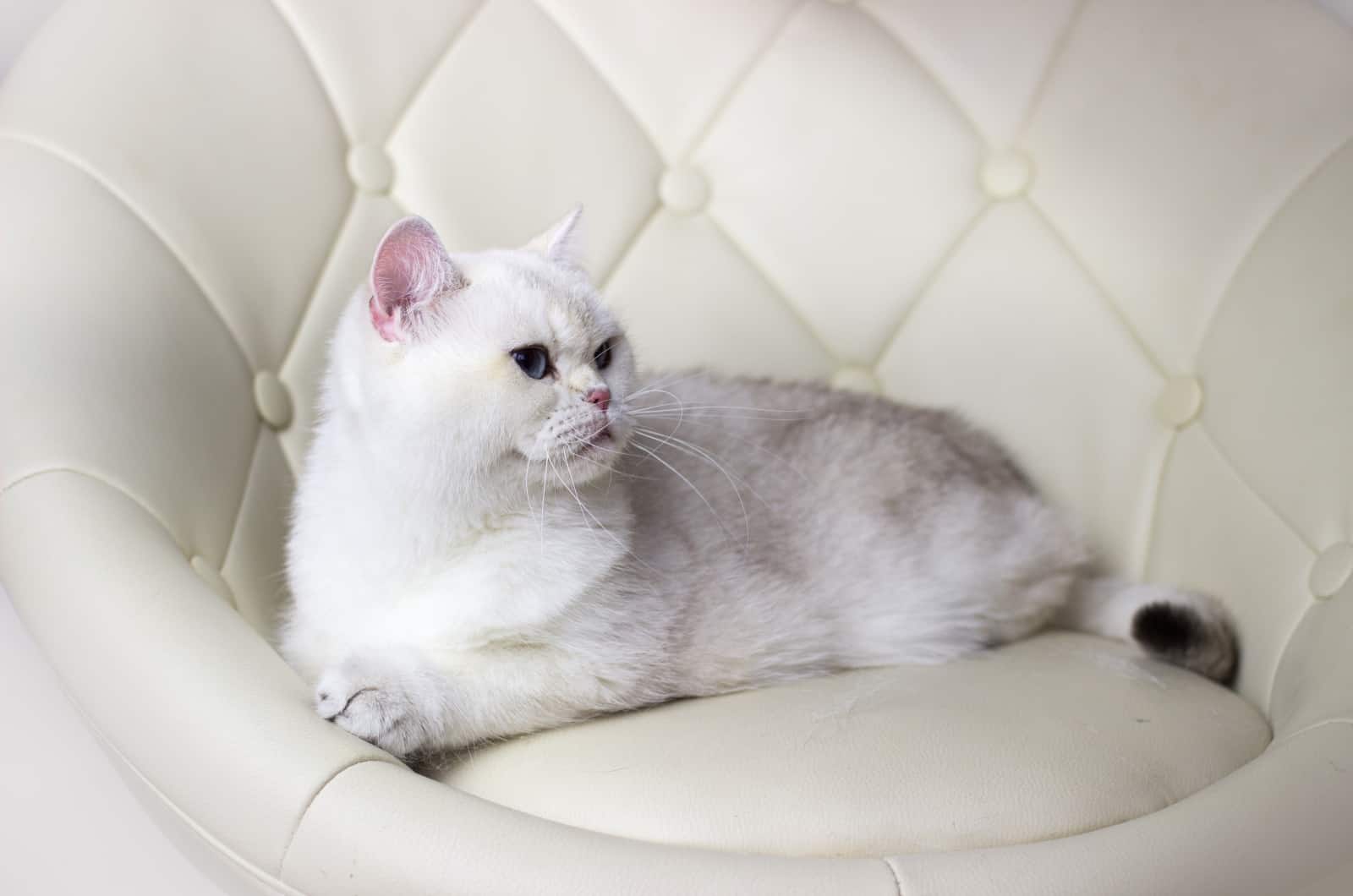
The chinchilla pattern is very similar to the shaded pattern; the main difference is that the cat’s outer coat is slightly tipped with darker colors.
Chinchilla Siberian cats also have white or light cream-colored undercoats, which provide them with a shimmering effect due to the slightly dark-colored tips on the tail, legs, back, and head.
Another difference is that chinchilla Siberian cats are only ever silver or gold in color.
Other Things You Should Know About Siberian Cats
The Siberian breed has gained a lot of popularity throughout the last few years, and most cat lovers are amazed by their appearance as well as their personality.
These sweet and affectionate cats may appear in a variety of color and pattern combinations, so whichever color comes to your mind, a Siberian cat has it.
If you’re considering adopting a Siberian cat, then I suggest you check out the following facts about these amazing cats that may help you learn more about this breed of cat.
• Siberian Forest cats are also called Russian Forest cats because Russia is the place of their origin, and they are one of the oldest cat breeds.
• They have a thick triple coat that is also water-resistant and allows them to survive in extremely cold weather. Of course, during warmer months, their coats are shorter and less dense.
• Siberian cats don’t shed as much as some other long-haired cats do. This is why they are considered to be the most hypoallergenic breed of cat.
• Their coat needs special grooming care. That means that regular brushing is obligatory if you want your Siberian cat to have a nice, healthy coat.
• Siberian cats have slightly oval eyes that may appear in different colors. When born, all Siberian kittens have blue eyes, but only the pointed Siberian will maintain the blue color of the eyes. Additionally, different eye color (heterochromia) is a common condition for Siberian cats, especially solid whites.
• Siberian cats are extremely affectionate and are great pets for families with children or other pets.
• These cats are considered to be very healthy and they may live up to 10 years. The most common health issue in these cats is the genetic disease hypertrophic cardiomyopathy (HCM).
You might want to check out the black smoke cat!
FAQ
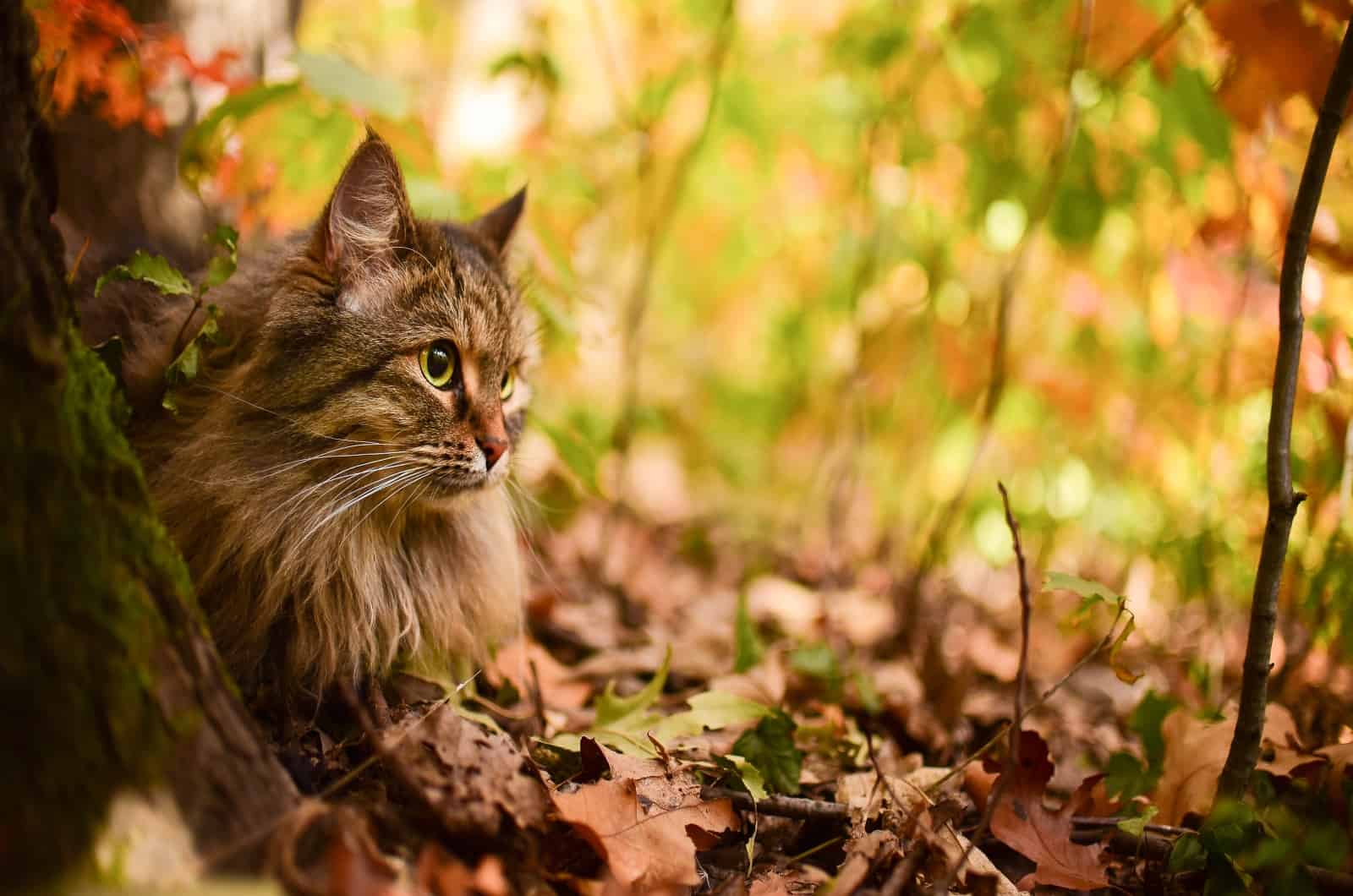
What Is The Rarest Siberian Cat?
The rarest color for a Siberian cat is silver. The main reason for their rarity is that the silver coloration is caused by a genetic mutation called the Melanin inhibitor. This gene causes the formation of melanin in less highly-pigmented areas of the cat’s coat.
Are White Siberian Cats Rare?
White Siberian cats are extremely rare because the white coloration is caused by a genetic mutation that kills all the pigment that creates colors, leaving the coat completely white.
Due to their rarity, they are hard to find, and if you find one, their price is high. White Siberian cats may cost from $1,500 to $4,000 and even higher.
Final Thought On Siberian Cat Colors
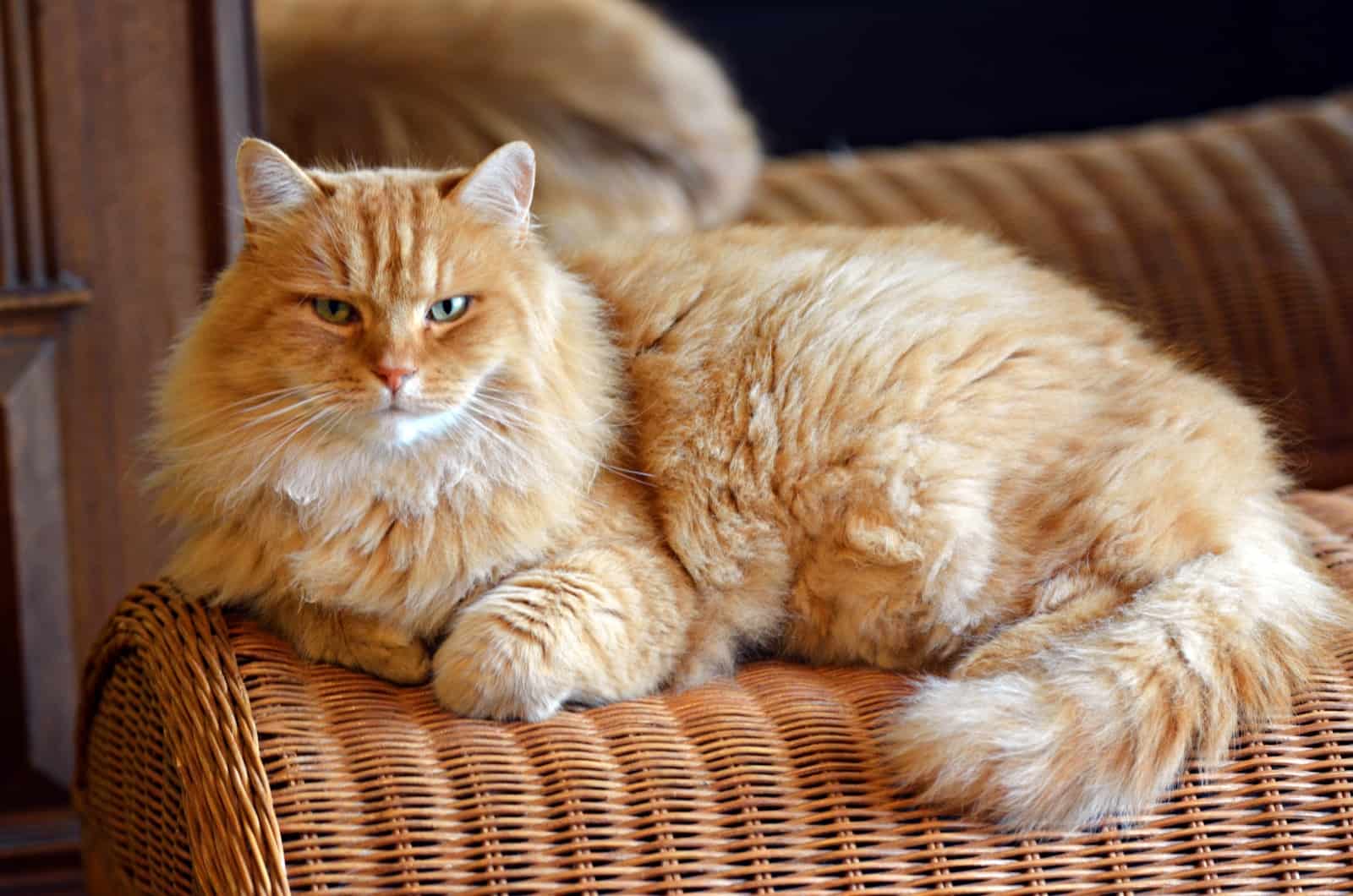
Siberian cats are amazing in every respect, but the best thing ever is that if you choose this cat to be your beloved pet, you also get to choose whichever color you want. Siberian cats can be a variety of color and pattern combinations.
Some of the most common Siberian cat colors and patterns are solid colors (black, blue, white, red, cream), tabby patterns (blue, silver, golden, black/brown, tortie), pointed patterns (lynx pointed), shaded, smoke chinchilla, wideband, and bi-color pattern.
Each one of these color and pattern combinations is characterized by certain features that make each coloration special.
Now that you have read this article, you know what the possible Siberian cat colors are, and you also get to know more interesting facts about these amazing cats!

